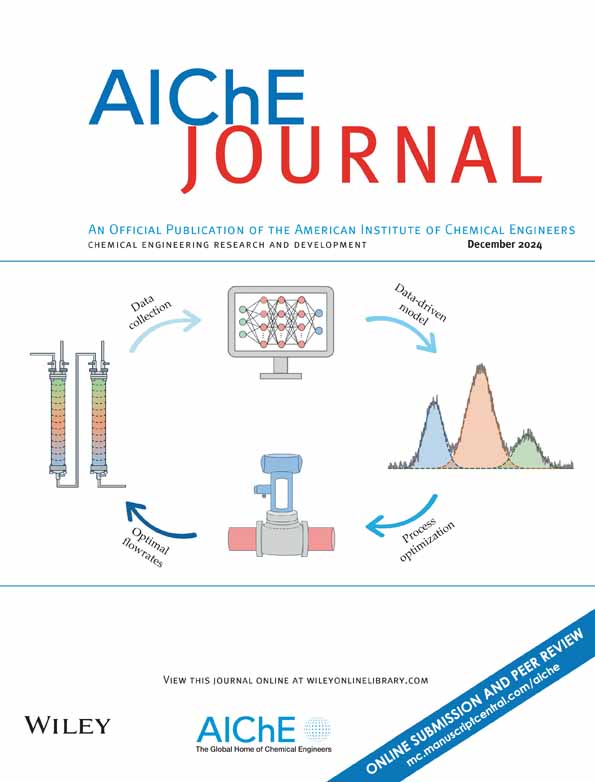Rational screening of deep eutectic solvents for the removal of halogenated volatile organic compounds
IF 3.5
3区 工程技术
Q2 ENGINEERING, CHEMICAL
引用次数: 0
Abstract
A novel screening method integrating theoretical calculations with experimental validation was proposed to select deep eutectic solvents (DESs) for the highly efficient removal of halogenated volatile organic compounds (HVOCs) from exhaust gas. 1,2-Dichloroethane and dibromomethane were used to evaluate the reliability of this screening method. Following a meticulous screening process, tetraethylammonium chloride (TEAC) and levulinic acid (Lev) were identified as the hydrogen bond acceptor and donor, respectively, for the preparation of the DES TEAC–Lev (1:2). The TEAC–Lev (1:2) exhibited favorable viscosity and thermal stability, ensuring its outstanding recyclability over multiple absorption–desorption cycles. The absorption ratios of 1,2-dichloroethane and dibromomethane using the prepared DESs were both greater than 98.5%. The microscopic absorption mechanism indicates that the excellent absorption performance of TEAC–Lev (1:2) is mainly attributed to hydrogen bond interactions between the chlorine atoms and HVOCs, as well as between Lev and HVOCs.去除卤代挥发性有机物的深度共晶溶剂的合理筛选
提出了一种理论计算与实验验证相结合的新型筛选方法,以筛选高效去除废气中卤代挥发性有机化合物(HVOCs)的深度共晶溶剂(DESs)。用1,2-二氯乙烷和二溴甲烷对该筛选方法的可靠性进行了评价。经过精心筛选,四乙基氯化铵(TEAC)和乙酰丙酸(Lev)分别被确定为氢键受体和供体,用于制备DES TEAC - Lev(1:2)。TEAC-Lev(1:2)具有良好的粘度和热稳定性,确保其在多次吸收-解吸循环中具有出色的可回收性。制备的DESs对1,2-二氯乙烷和二溴甲烷的吸收率均大于98.5%。微观吸附机理表明,TEAC-Lev(1:2)的优异吸附性能主要归因于氯原子与HVOCs之间以及Lev与HVOCs之间的氢键相互作用。
本文章由计算机程序翻译,如有差异,请以英文原文为准。
求助全文
约1分钟内获得全文
求助全文
来源期刊

AIChE Journal
工程技术-工程:化工
CiteScore
7.10
自引率
10.80%
发文量
411
审稿时长
3.6 months
期刊介绍:
The AIChE Journal is the premier research monthly in chemical engineering and related fields. This peer-reviewed and broad-based journal reports on the most important and latest technological advances in core areas of chemical engineering as well as in other relevant engineering disciplines. To keep abreast with the progressive outlook of the profession, the Journal has been expanding the scope of its editorial contents to include such fast developing areas as biotechnology, electrochemical engineering, and environmental engineering.
The AIChE Journal is indeed the global communications vehicle for the world-renowned researchers to exchange top-notch research findings with one another. Subscribing to the AIChE Journal is like having immediate access to nine topical journals in the field.
Articles are categorized according to the following topical areas:
Biomolecular Engineering, Bioengineering, Biochemicals, Biofuels, and Food
Inorganic Materials: Synthesis and Processing
Particle Technology and Fluidization
Process Systems Engineering
Reaction Engineering, Kinetics and Catalysis
Separations: Materials, Devices and Processes
Soft Materials: Synthesis, Processing and Products
Thermodynamics and Molecular-Scale Phenomena
Transport Phenomena and Fluid Mechanics.
 求助内容:
求助内容: 应助结果提醒方式:
应助结果提醒方式:


